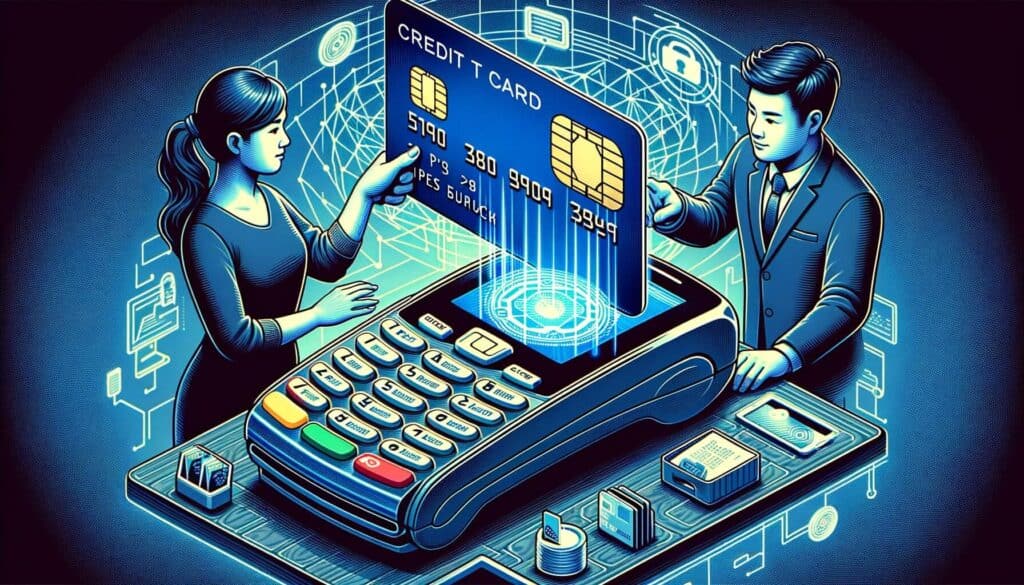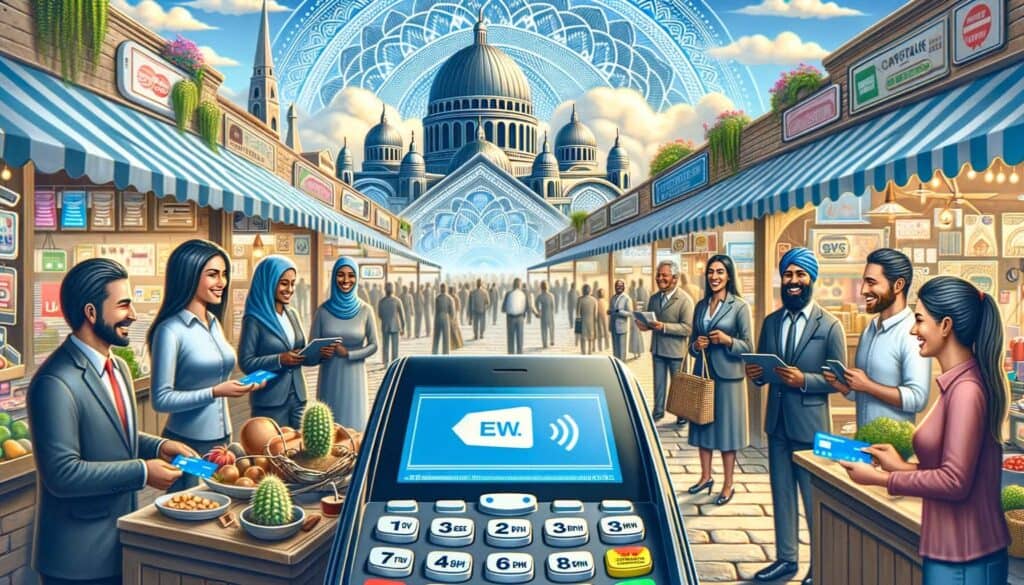
By Catharine Proctor February 23, 2025
In today’s digital age, the need for secure payment processing has become paramount. With the rise of credit card fraud and data breaches, businesses and consumers alike are seeking ways to protect their financial information. One solution that has gained widespread adoption is the use of EMV-compliant terminals. In this article, we will explore everything you need to know about EMV-compliant terminals, from understanding the basics to implementing them in your business.
EMV, which stands for Europay, Mastercard, and Visa, is a global standard for secure payment transactions. It was developed to combat the increasing instances of counterfeit card fraud by introducing a more secure method of processing payments. EMV-compliant terminals are designed to read and process EMV chip cards, which contain embedded microchips that store and protect cardholder data.
The Importance of EMV Compliance: Protecting Against Fraud

The importance of EMV compliance cannot be overstated when it comes to protecting against fraud. According to the Nilson Report, global card fraud losses reached a staggering $27.85 billion in 2018, with the United States accounting for nearly half of that amount. EMV-compliant terminals provide an added layer of security by validating the authenticity of the card and the cardholder’s identity, making it much more difficult for fraudsters to clone or counterfeit cards.
One of the key features of EMV-compliant terminals is the use of dynamic authentication, which generates a unique transaction code for each payment. This code, known as a cryptogram, cannot be reused or replicated, making it virtually impossible for fraudsters to intercept and use for fraudulent transactions. By implementing EMV-compliant terminals, businesses can significantly reduce their risk of financial loss due to card fraud.
How EMV-Compliant Terminals Work: A Step-by-Step Guide

To understand how EMV-compliant terminals work, let’s walk through a step-by-step guide of a typical transaction process.
1. Card Insertion: The customer inserts their EMV chip card into the terminal, rather than swiping it like with traditional magnetic stripe cards.
2. Card Authentication: The terminal reads the chip on the card and verifies its authenticity using cryptographic algorithms. This process ensures that the card has not been tampered with or cloned.
3. Cardholder Verification: The terminal prompts the cardholder to enter a PIN or provide a signature to verify their identity. This step adds an extra layer of security, as it ensures that the person using the card is the legitimate cardholder.
4. Transaction Processing: Once the card and cardholder have been authenticated, the terminal securely transmits the transaction data to the payment processor or acquiring bank for authorization.
5. Cryptogram Generation: The terminal generates a unique cryptogram for the transaction, which includes information such as the transaction amount, card details, and a timestamp. This cryptogram is encrypted and sent along with the transaction data for validation.
6. Authorization and Approval: The payment processor or acquiring bank receives the transaction data and cryptogram, verifies their authenticity, and checks for available funds. If the transaction is approved, the authorization is sent back to the terminal.
7. Completion of Transaction: The terminal prints a receipt for the customer to sign or provides a digital receipt for their records. The transaction is now complete, and the funds will be transferred from the customer’s account to the merchant’s account.
Benefits of EMV-Compliant Terminals for Merchants and Consumers

The adoption of EMV-compliant terminals brings numerous benefits for both merchants and consumers. Let’s explore some of the key advantages:
1. Reduced Fraud Risk: As mentioned earlier, EMV-compliant terminals significantly reduce the risk of card fraud by validating the authenticity of the card and the cardholder’s identity. This protection extends to both in-person and online transactions, making it a valuable tool for businesses operating in various environments.
2. Liability Shift: With the introduction of EMV technology, a liability shift occurred in many countries, including the United States. Prior to the shift, if a fraudulent transaction occurred using a counterfeit card, the card issuer or payment processor would typically bear the financial burden. However, after the shift, if a merchant does not have an EMV-compliant terminal and a fraudulent transaction occurs using an EMV chip card, the liability may shift to the merchant.
3. Consumer Confidence: EMV-compliant terminals provide consumers with peace of mind knowing that their payment information is being processed securely. This increased confidence can lead to higher customer satisfaction and loyalty, as well as increased sales for merchants.
4. Global Acceptance: EMV technology is a global standard, meaning that EMV-compliant terminals can be used in various countries around the world. This interoperability is particularly beneficial for businesses that operate internationally or cater to a diverse customer base.
EMV Liability Shift: What it Means for Businesses
The EMV liability shift has been a significant driver for the adoption of EMV-compliant terminals by businesses. Prior to the shift, the liability for fraudulent transactions using counterfeit cards typically fell on the card issuer or payment processor. However, with the introduction of EMV technology, the liability shifted to the party with the least secure technology.
For businesses that have not implemented EMV-compliant terminals, this means that if a fraudulent transaction occurs using an EMV chip card, they may be held financially responsible for the loss. This shift in liability has motivated many businesses to upgrade their payment processing systems to avoid potential financial losses.
Choosing the Right EMV-Compliant Terminal for Your Business
When it comes to choosing the right EMV-compliant terminal for your business, there are several factors to consider. Here are some key considerations:
1. Terminal Type: EMV-compliant terminals come in various forms, including countertop terminals, mobile terminals, and integrated POS systems. Consider your business needs and the environment in which you operate to determine the most suitable terminal type.
2. Connectivity Options: EMV-compliant terminals can connect to payment networks using various methods, such as Ethernet, Wi-Fi, or cellular data. Evaluate the available connectivity options and choose the one that best suits your business requirements.
3. Payment Acceptance: Ensure that the EMV-compliant terminal you choose supports the payment methods you want to accept, such as credit cards, debit cards, mobile wallets, or contactless payments.
4. Security Features: Look for terminals that offer additional security features, such as end-to-end encryption and tokenization, to further protect sensitive cardholder data.
5. Cost and Pricing: Consider the upfront cost of the terminal, as well as any ongoing fees or charges associated with its use. Compare pricing options from different providers to find the most cost-effective solution for your business.
Implementing EMV-Compliant Terminals: Best Practices and Considerations
Implementing EMV-compliant terminals in your business requires careful planning and consideration. Here are some best practices to ensure a smooth implementation process:
1. Assess Your Current Infrastructure: Before implementing EMV-compliant terminals, assess your current payment processing infrastructure to identify any necessary upgrades or changes. This may include upgrading your POS system, ensuring compatibility with EMV technology, and training your staff on the new terminals.
2. Train Your Staff: Proper training is crucial to ensure that your staff understands how to use the new EMV-compliant terminals correctly. Provide comprehensive training on card insertion, cardholder verification methods, and troubleshooting common issues.
3. Communicate with Customers: Inform your customers about the transition to EMV-compliant terminals and educate them on the benefits of using chip cards. Display signage at your point of sale and provide clear instructions on how to use the new terminals.
4. Test and Monitor: Before fully implementing EMV-compliant terminals, conduct thorough testing to ensure that they are functioning correctly and securely. Monitor transactions closely during the initial phase to identify any potential issues or areas for improvement.
5. Stay Up to Date: EMV technology is constantly evolving, with new security features and updates being introduced regularly. Stay informed about the latest developments and ensure that your terminals are kept up to date with the latest software and firmware updates.
Common Challenges and Solutions in EMV Terminal Integration
While the adoption of EMV-compliant terminals brings numerous benefits, there can be challenges in the integration process. Here are some common challenges and their solutions:
1. Cost of Implementation: Upgrading to EMV-compliant terminals can be costly, especially for small businesses. To mitigate this challenge, consider leasing terminals or exploring financing options to spread out the cost over time.
2. Technical Compatibility: Ensuring that your existing POS system is compatible with EMV technology can be a challenge. Work closely with your payment processor or terminal provider to ensure seamless integration and compatibility.
3. Staff Training: Training your staff on how to use the new EMV-compliant terminals effectively can be time-consuming and challenging. Provide comprehensive training materials and resources, and consider conducting refresher training sessions periodically.
4. Customer Education: Educating your customers on how to use chip cards and the benefits of EMV technology can be a challenge. Use clear signage, provide instructions at the point of sale, and offer assistance to customers who may be unfamiliar with the new process.
5. Technical Support: Inevitably, technical issues may arise during the integration process. Ensure that you have access to reliable technical support from your terminal provider or payment processor to address any issues promptly.
Frequently Asked Questions (FAQs) about EMV-Compliant Terminals
Q1. What is the difference between EMV-compliant terminals and traditional magnetic stripe terminals?
Answer: EMV-compliant terminals read and process EMV chip cards, which contain embedded microchips that store and protect cardholder data. Traditional magnetic stripe terminals, on the other hand, read the magnetic stripe on the back of the card, which is more susceptible to cloning and counterfeiting.
Q2. Are EMV-compliant terminals more secure than traditional magnetic stripe terminals?
Answer: Yes, EMV-compliant terminals are more secure than traditional magnetic stripe terminals. The use of dynamic authentication and unique transaction codes makes it much more difficult for fraudsters to clone or counterfeit cards.
Q3. Can EMV-compliant terminals process contactless payments?
Answer: Yes, many EMV-compliant terminals are equipped to process contactless payments, such as mobile wallets or contactless cards. This provides added convenience for both merchants and consumers.
Q4. Do I need to upgrade my POS system to use EMV-compliant terminals?
Answer: In some cases, upgrading your POS system may be necessary to ensure compatibility with EMV technology. Consult with your payment processor or terminal provider to determine the best course of action for your business.
Q5. What happens if I don’t upgrade to EMV-compliant terminals?
Answer: If you don’t upgrade to EMV-compliant terminals and a fraudulent transaction occurs using an EMV chip card, you may be held financially responsible for the loss. Upgrading to EMV-compliant terminals is essential to protect your business from potential liability.
Conclusion
EMV-compliant terminals have revolutionized the payment processing industry by providing a more secure method of transaction processing. By understanding the basics of EMV compliance, the importance of protecting against fraud, and how EMV-compliant terminals work, businesses can make informed decisions about implementing this technology.
The benefits of EMV compliance, such as reduced fraud risk, increased consumer confidence, and global acceptance, make it a worthwhile investment for businesses of all sizes. By choosing the right EMV-compliant terminal, implementing best practices, and addressing common challenges, businesses can seamlessly integrate this technology into their operations and enhance the security of their payment processing systems.